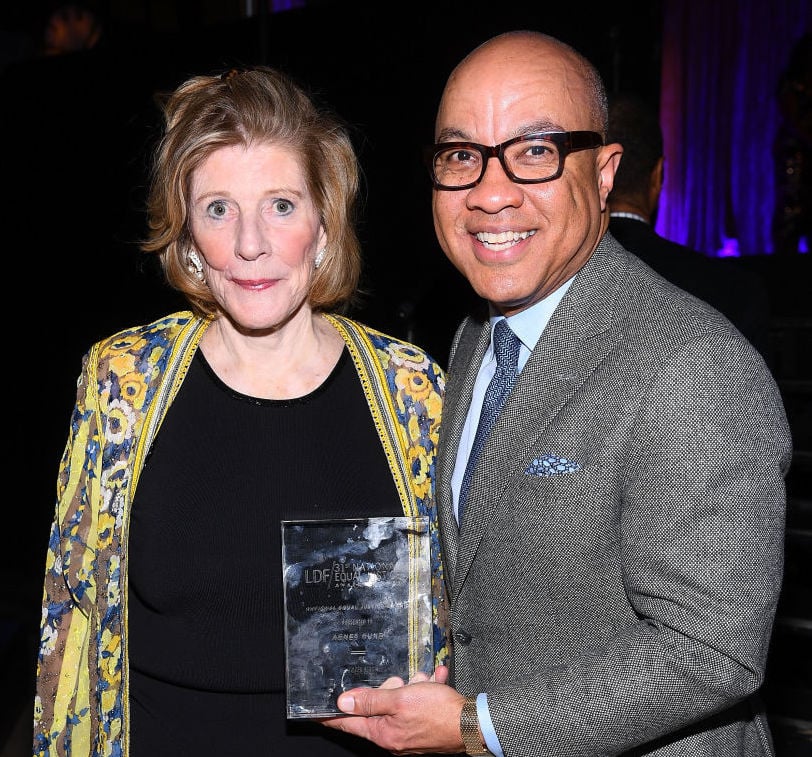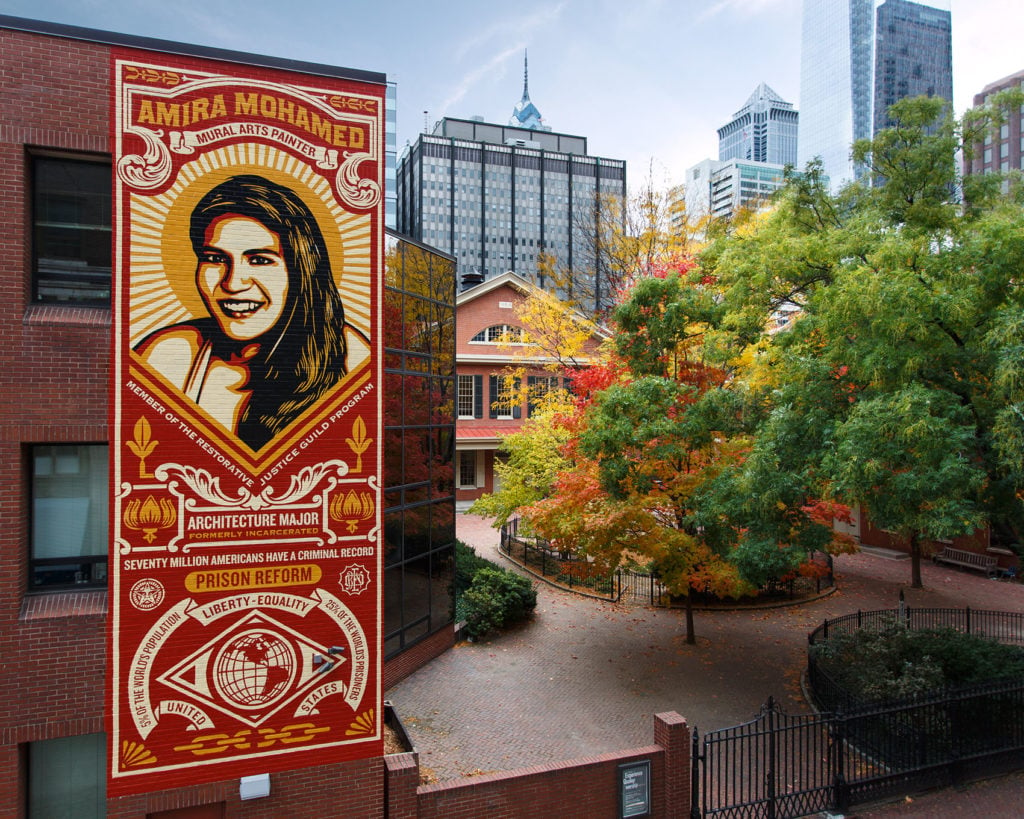Art World
Agnes Gund’s Art for Justice Fund Just Awarded $22 Million in Grants to Fight Mass Incarceration
Mural Arts Philadelphia was among a small group of arts-based organizations to make the freshman class of grantees.

Mural Arts Philadelphia was among a small group of arts-based organizations to make the freshman class of grantees.

Two giant murals by street artist Shepard Fairey loom over the streets of Philadelphia’s Center City: One features James Anderson, a former Los Angeles gang member who now works to keep others out of prison; the other depicts Amira Mohamed, a formerly incarcerated architecture student.
Commissioned by Mural Arts Philadelphia, the works are part of a project designed to give a face, literally, to the phenomenon of mass incarceration in the United States. Now, they are also a big reason why the nonprofit has garnered one of the first grants awarded by Agnes Gund‘s newly established Art for Justice Fund.
On Wednesday, the fund—founded this summer by the arts patron to support criminal-justice reform—disbursed $22 million in grants to 30 organizations, with awards ranging from $100,000 to $7.5 million. Mural Arts, the main visual-arts organization in this first round of grantees, won a $200,000 award for its ongoing efforts to shed light on the problem of mass incarceration.
Gund established the Art for Justice Fund with proceeds from the sale of Roy Lichtenstein’s Masterpiece (1962), which she sold to billionaire collector Steve Cohen for $165 million. She put $100 million aside to establish the fund, managed by the Ford Foundation.
The issue of mass incarceration—and its disproportionate impact on people of color—has come to the fore in recent years amid a rising national conversation about the country’s criminal justice system. A small sample of the damning statistics illustrates why: America accounts for some 25 percent of those incarcerated worldwide; it spends a whopping $80 billion on corrections annually; and it jails black children (minors under 18) at a rate five times higher than it does white children.

A mural by Shepard Fairey in Philadelphia, a project of Mural Arts Philadelphia. Courtesy Mural Arts.
The grants are part of the organization’s overarching plan to decrease the number of people incarcerated in the United States. In a conference call on Wednesday, the fund announced its ambitious goal of reducing the prison population by as much as 20 percent in five targeted states.
Most of the grants will go to either to nonprofits working to address specific problems in the criminal justice system like America’s bail system, which many argue discriminates against the poor, or to literary and theatrical programs.
In addition to Mural Arts, other arts-based organizations to receive awards this year include Art 180, Rehabilitation Through the Arts, and Arts for Incarcerated Youth Project. In 2018, the Rockefeller Philanthropy Advisors, which is organizing the Fund and distributing grants, says it hopes to include even more visual arts organizations. (The full freshman class is listed on the fund’s website.)
Alice Walton, art collector and founder of Arkansas’s Crystal Bridges Art Museum, has made a $5 million commitment to support the Art for Justice Fund, bolstering the ranks of their patrons. Aside from Gund herself, those include other collectors and museum trustees including Jo Carole Lauder, Brooke and Dan Neidich, and Glenn Fuhrman.
At Mural Arts, the grant has been a source of excitement from the start. “I literally jumped for joy when we were invited to apply,” executive director Jane Golden told artnet News.
Now that it has won the award, the nonprofit will put the money to work by launching a public art project in partnership with the city’s criminal justice department. The project will aim to bring down the county jail’s population, to work with inmates at a nearby state prison, and to work with formerly incarcerated artists to provide career guidance, among other initiatives.
“It’s hard enough for artists to find work in our society, never mind the formerly incarcerated,” said Golden. “How do you put that genius and talent and creativity to work?”